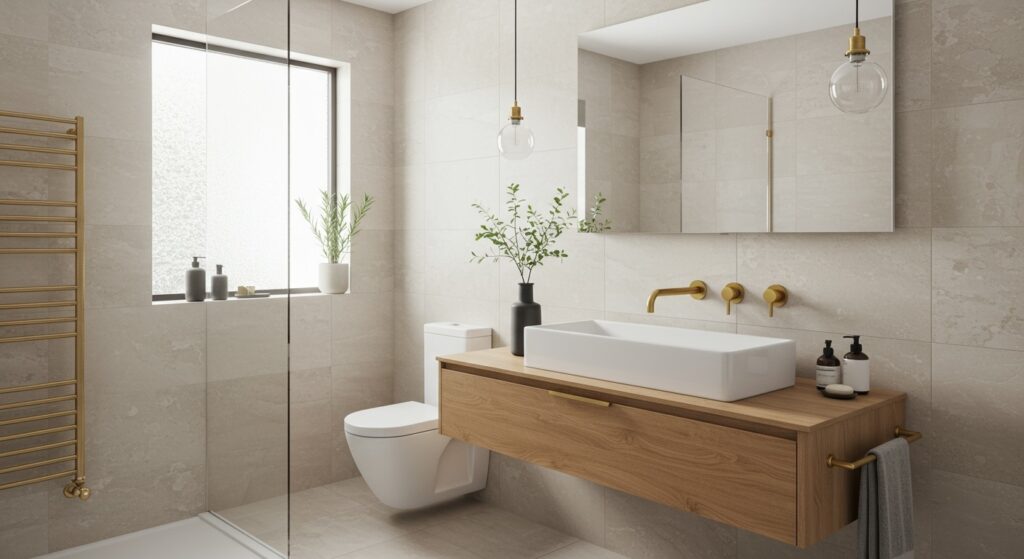Your bathroom deserves more than just functional tiles. It needs surfaces that make you pause each morning and think, “I actually love this space.” The right tile choice can turn a cramped powder room into something that feels intentional, or transform a builder-grade bathroom into your personal retreat.
Modern bathroom tile isn’t just about following trends blindly. It’s about finding that sweet spot where your style meets everyday practicality. Maybe you’ve been scrolling through bathroom inspiration and wondering which ideas will actually hold up when kids are splashing water everywhere or which finishes won’t show every water spot.
What’s exciting right now is how much more creative tile design has become. We’re seeing everything from organic shapes that soften hard bathroom lines to oversized formats that make small spaces feel surprisingly open. The options go way beyond basic white subway tile (though there’s still a place for that classic look).
Why Modern Tile Choices Matter More Than You Think
The tiles you pick do serious heavy lifting in your bathroom. They set the entire mood before you add a single decorative element. Walk into a space with cool, glossy tiles and you’ll feel one way. Switch those out for warm, textured stone-look tiles and suddenly the whole vibe shifts.
There’s also the practical side that nobody talks about enough. Good tile choices hide water spots better, require less grout cleaning, and can actually make tight spaces feel less claustrophobic. I’ve seen tiny bathrooms feel twice their size just because someone chose large-format tiles in the right finish.
The investment makes sense too. While bathroom ideas come and go, quality tile work lasts for decades. You’re looking at something you’ll see every single day, so it’s worth getting right the first time rather than living with regret for the next 15 years.
1. Large-Format Tiles That Expand Visual Space

Big tiles are having a serious moment, and there’s good reason why. When you minimize grout lines, your eye travels further without interruption. That creates an optical illusion that makes walls seem taller and floors stretch wider than they actually are.
I’m talking about tiles in the 12×24 inch range at minimum, but many designers are pushing to 24×48 inches or even larger. These work especially well in small bathroom renovation projects where every visual trick counts. The fewer seams your eye has to process, the calmer and more spacious everything feels.
The practical benefits sneak up on you too. Less grout means less scrubbing and fewer places for mildew to hide. You’ll spend less time with a toothbrush cleaning grout lines and more time actually enjoying your bathroom. Just make sure your substrate is perfectly level since large tiles show every imperfection underneath.
One thing to watch: these tiles need professional installation. They’re heavy and unforgiving if not set properly. But when done right? The seamless look is absolutely worth it.
2. Textured and Dimensional Tiles for Depth

Flat surfaces can feel a bit lifeless, especially in bathrooms that lack natural light. That’s where dimensional tiles come in – they catch light differently throughout the day and create visual interest without adding color or pattern.
These tiles might have rippled surfaces, geometric relief patterns, or subtle waves molded into them. The play of shadow and light gives your walls movement and character. I’ve seen these transform a simple minimalist bathroom design from stark to sophisticated just by adding that tactile element.
The texture also serves a practical purpose in showers. Slightly textured tiles provide better slip resistance underfoot than completely smooth surfaces. Just avoid anything with deep crevices that trap soap scum – you want dimension, not a cleaning nightmare.
Where you place textured tiles matters. They work beautifully as accent walls behind vanities or in shower niches. Using them everywhere might feel overwhelming, so think of them as your statement piece rather than the whole story.
3. Earthy Terracotta and Warm Neutrals
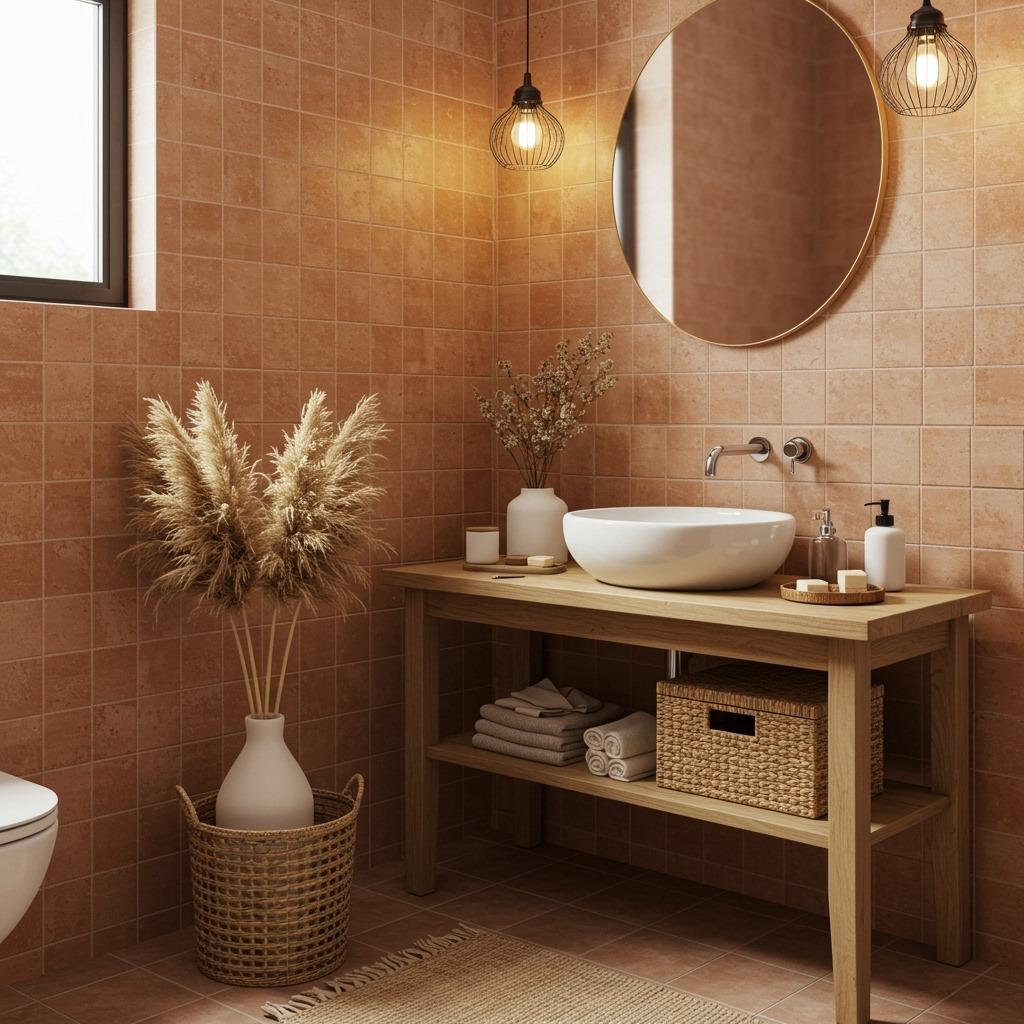
There’s been a major shift away from cool grays toward warmer, earthier tones. Terracotta tiles bring this gorgeous sun-baked warmth that makes bathrooms feel less clinical and more welcoming. Think of colors that remind you of clay pots, desert landscapes, or Mediterranean villages.
These warm tones pair beautifully with natural materials like wood vanities and brass fixtures. The combination creates that lived-in, collected-over-time feeling that cold modern spaces sometimes lack. It’s contemporary but not cold, which is exactly what many of us want in a spa-inspired bathroom.
Don’t worry if bold terracotta feels like too much commitment. Plenty of modern tiles come in soft peachy tones, warm beiges, or sandy neutrals that give you that warmth without going full rustic. You can layer these tones for a sophisticated monochromatic look that feels expensive.
The beauty of this trend is how forgiving these colors are. They don’t show water spots as easily as stark white or dark tiles. Imperfections and variations in handmade tiles actually add to the charm rather than looking like defects.
4. Geometric Patterns That Make a Statement

If you’re ready to move beyond basic layouts, geometric tiles open up a whole world of visual possibilities. Hexagons, diamonds, chevrons, arabesque shapes – these create focal points that traditional rectangular tiles just can’t match.
The key is deciding where to make your statement. Maybe it’s a geometric floor that becomes the star while walls stay simple. Or perhaps you use modern accent wall ideas with patterned tiles behind your vanity while keeping the rest neutral. Mixing tile shapes on different surfaces usually looks busy rather than intentional.
Color-wise, you can go bold or subtle with the same shapes. Black and white geometric patterns read as classic and graphic. Tone-on-tone geometric layouts add interest without competing for attention. The shape does the visual work either way.
Installation does get trickier with non-standard shapes. Your tile setter will need more time and precision, which affects cost. But the end result looks custom and considered in a way that builder-grade rectangles never will.
5. Natural Stone Look Without the Maintenance
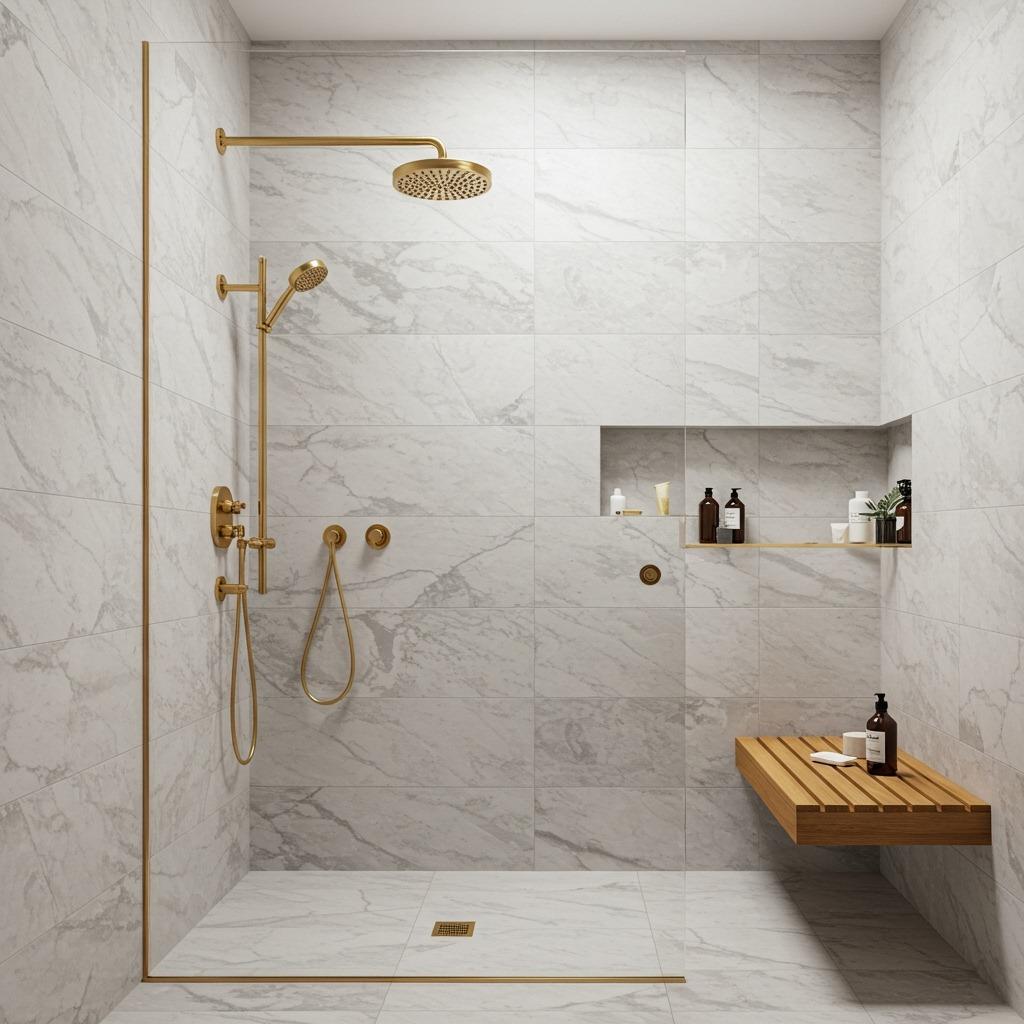
Real marble looks incredible until you’re living with the maintenance reality of sealing, etching, and staining worries. Modern porcelain technology has gotten so good at mimicking natural stone that most people can’t tell the difference from a few feet away.
These stone-look tiles give you the luxury aesthetic without the high-maintenance relationship. You get those gorgeous natural variations and veining patterns, but in a format that laughs at acidic bathroom cleaners and never needs sealing. For anyone doing home improvement ideas on a realistic budget, this is your shortcut to expensive-looking results.
The variety available now is impressive. You can find tiles that look like honed limestone, polished marble, rustic travertine, or dramatic granite. Some even include the natural imperfections and color variations that make stone feel authentic. The technology captures not just the look but the depth and translucency of real stone.
Where these really shine is in wet areas. Use them confidently in showers and around tubs without worrying about water damage or discoloration over time.
6. Terrazzo for a Playful Yet Sophisticated Look

Terrazzo has made a huge comeback, but modern versions feel fresher and more intentional than the 1950s office building aesthetic you might remember. Contemporary terrazzo tiles come in softer color palettes with controlled chip sizes that read as sophisticated rather than dated.
What makes terrazzo brilliant for bathrooms is its busy surface. Those multicolored flecks hide water spots, soap drips, and the general chaos of daily use. It’s pretty and practical at the same time. Plus, the speckled pattern adds visual texture without requiring you to coordinate multiple tile types.
You can find terrazzo with large, dramatic chips for a bolder look or tiny speckles for something more subtle. Some feature metallic or mother-of-pearl inclusions that catch light beautifully. The options let you match everything from colorful minimalist bedroom vibes to more traditional spaces.
Installation-wise, terrazzo tiles work like any other porcelain or cement tile. The pattern is throughout the material, so chips or cuts won’t ruin the look. This makes it relatively forgiving during installation compared to tiles where pattern alignment is critical.
7. Subway Tiles with a Twist
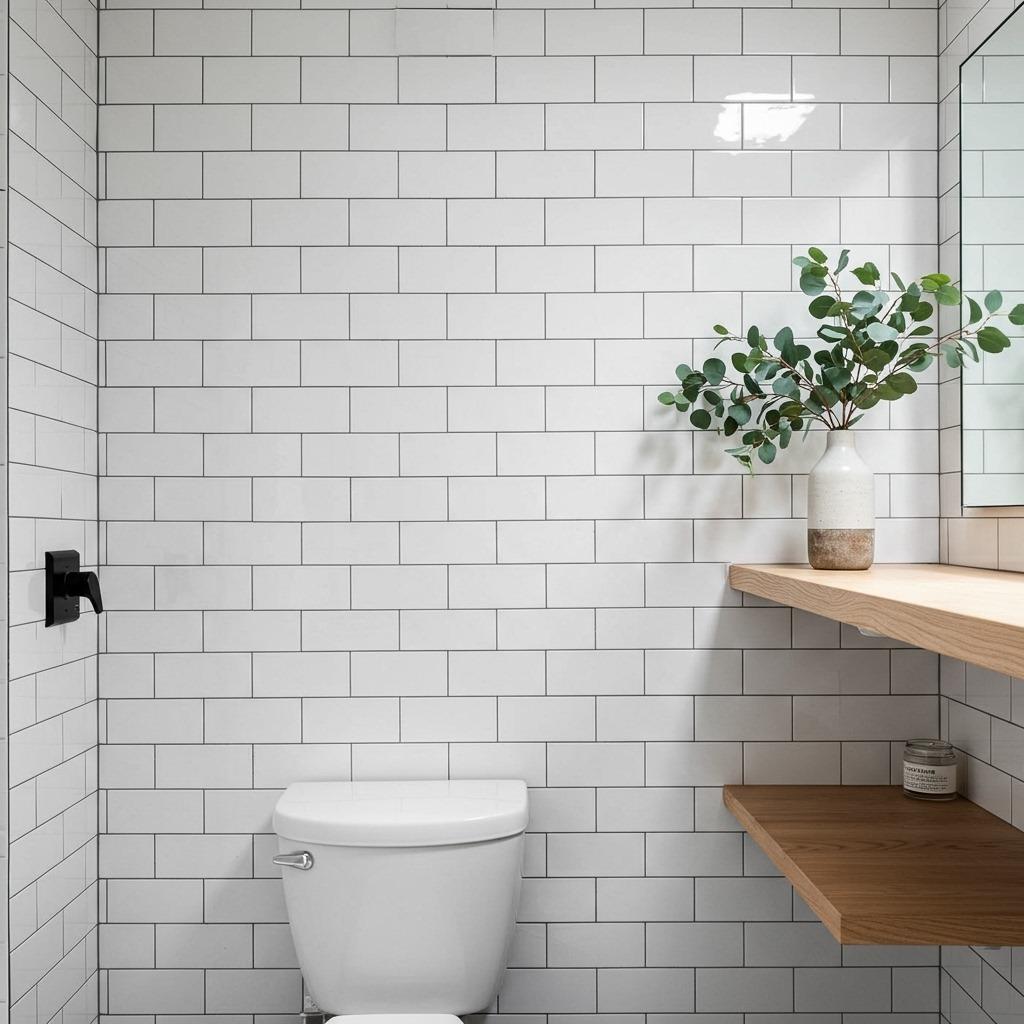
Before you dismiss subway tile as boring, hear me out. The classic shape is getting creative treatments that make it feel current again. We’re seeing vertical stacks instead of brick patterns, colored grout that creates grid effects, and unexpected sizes from mini 2x4s to oversized 4x16s.
The beauty of working with a familiar shape in new ways is that it still feels approachable. You’re not taking a huge risk, but you’re definitely not doing what every other bathroom does either. Try running them vertically to make ceilings feel higher, or create a herringbone pattern for subtle visual interest.
Colored or contrasting grout has become a design element in itself. Dark grout with white tiles creates graphic definition. Tonal grout makes tiles blend seamlessly. This simple choice completely changes how the same tile reads in a space. It’s an easy way to customize a look without custom tiles.
These variations work well if you’re updating a small space renovation and want something classic that won’t feel dated in five years. The familiar shape provides a safety net while the creative application keeps things interesting.
8. Wood-Look Tiles That Fool the Eye
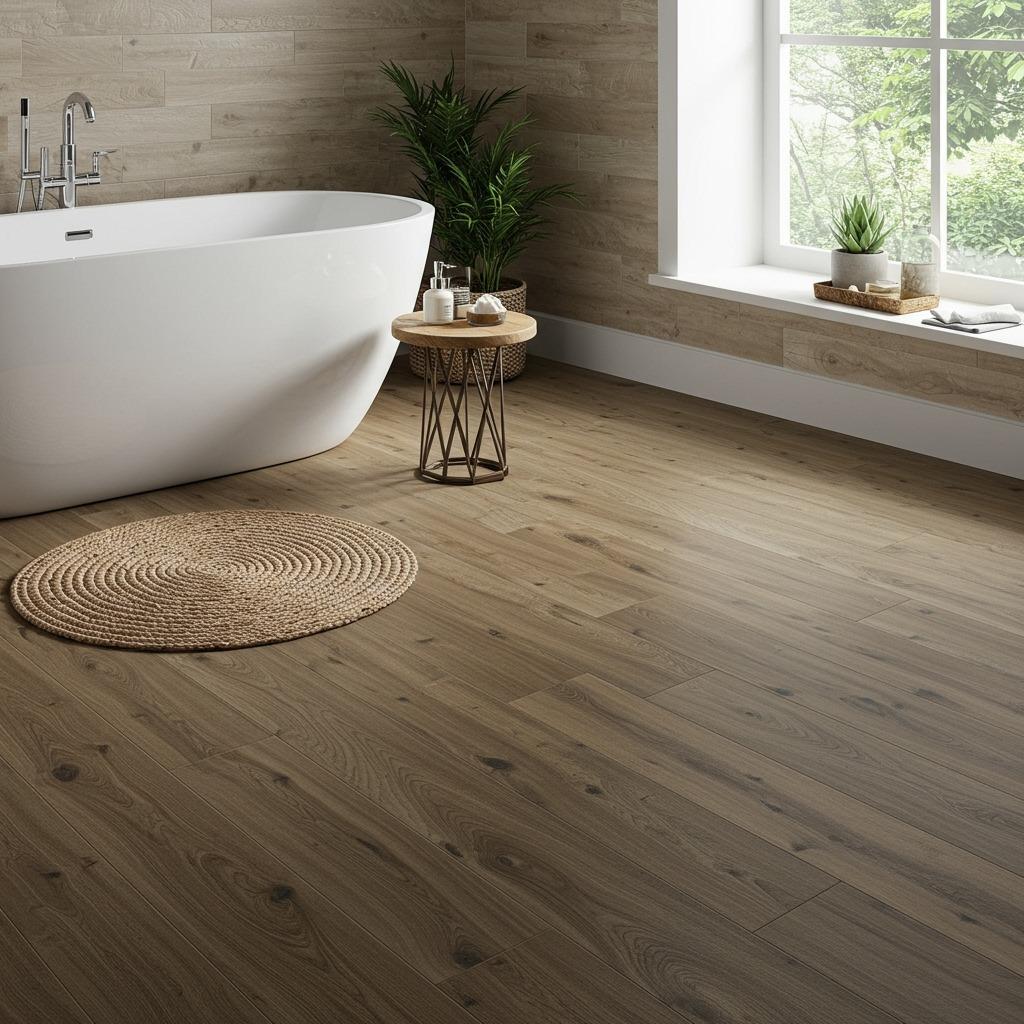
Wood and bathrooms have always had a complicated relationship. Real wood can warp, stain, and generally freak out in humid conditions. Enter wood-look porcelain tiles that capture the warmth of wood planks without any of the moisture anxiety.
The realism in current wood-look tiles is kind of shocking. They include knots, grain variations, and that slightly worn appearance that makes hardwood feel authentic. You can choose from everything that mimics reclaimed barn wood to sleek modern oak. The visual warmth transforms bathrooms from cold and utilitarian to cozy and inviting.
These tiles work especially well on floors where you want that continuous flow from bedroom ideas into adjoining bathrooms. The wood look connects spaces visually while maintaining the water-resistance you need. No worrying about bath mats staying perfectly in place or water damage near the tub.
Installation follows the same process as standard tiles, though paying attention to plank direction and mixing boxes for color variation helps achieve that natural wood randomness. The result looks like you installed real hardwood but with zero ongoing maintenance stress.
9. Matte Finishes for a Modern, Low-Maintenance Look
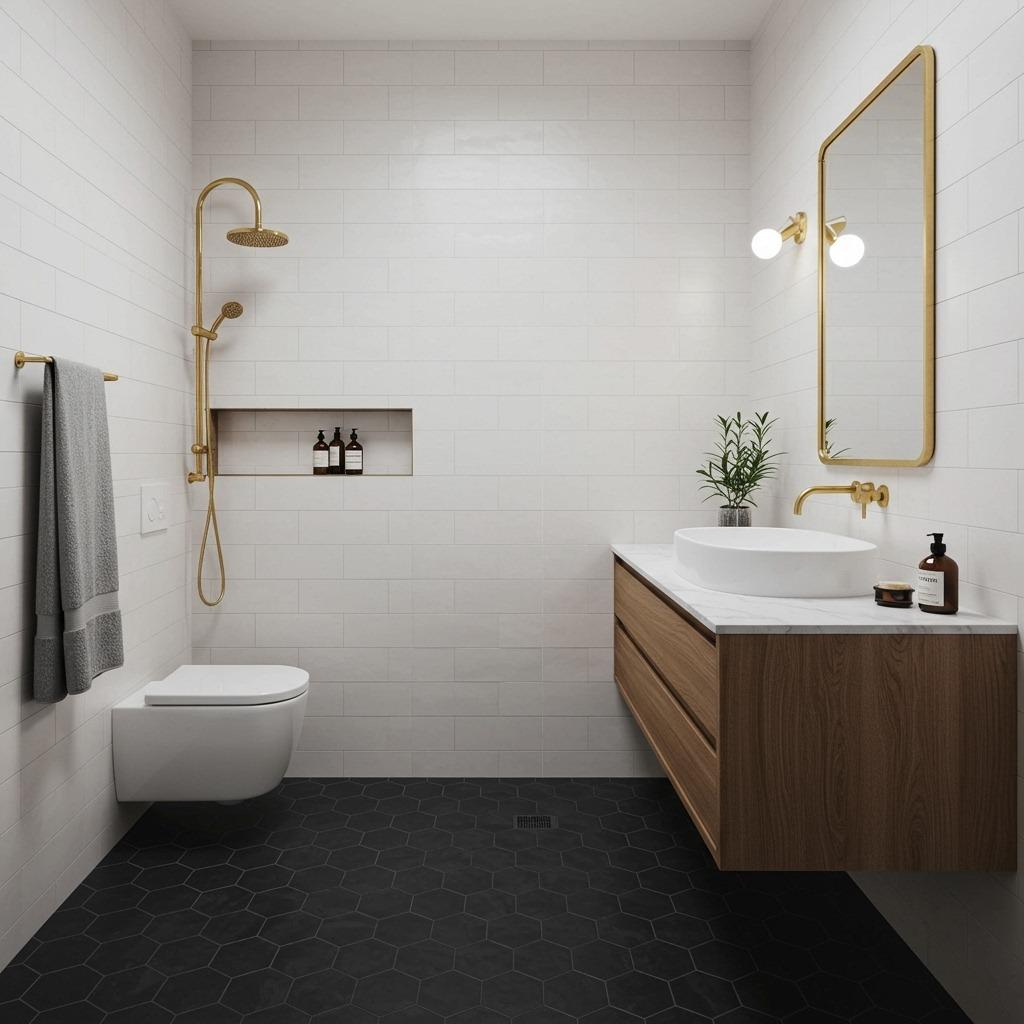
Glossy tiles have their place, but matte finishes are dominating modern bathroom design for good reasons. That soft, non-reflective surface feels more sophisticated and contemporary. It’s also significantly more forgiving when it comes to water spots and fingerprints.
Matte tiles create a calmer visual atmosphere because they absorb light rather than bouncing it around. This works beautifully in small bathrooms where too much reflection can feel chaotic. The understated elegance lets other design elements – your fixtures, mirrors, or accessories – take center stage.
You’ll find matte finishes across almost every tile style now, from concrete-look porcelain to colorful ceramics. This makes it easy to get that modern look regardless of which aesthetic direction you’re heading. Pair matte tiles with the warmth you’d find in a cozy winter bedroom for a space that feels genuinely relaxing.
One practical note: matte tiles on shower floors provide better traction than their glossy counterparts. That slight texture gives you extra slip resistance without looking or feeling rough. It’s a subtle safety upgrade that doesn’t compromise style.
10. Mixed Materials and Tile Combinations

Why choose just one tile when mixing materials creates so much more visual interest? Contemporary bathrooms are embracing combinations – maybe large-format tiles on the floor with smaller mosaics on the walls, or smooth tiles paired with textured accent bands.
The trick is maintaining some common element between different tiles so the look feels cohesive rather than chaotic. Maybe they share a color family, similar undertones, or complementary textures. You want variety that feels intentional, not like you couldn’t decide and used everything.
Mixing also lets you allocate your budget strategically. Splurge on beautiful statement tiles for a smaller accent area while using more affordable options for larger expanses. This approach appears in many affordable home upgrades where smart choices create high-end looks without matching price tags.
Consider how different tile types perform in different areas too. You might want smooth, easy-to-clean tiles behind the toilet but textured tiles where they won’t trap grime. Mixing materials lets you optimize both aesthetics and function throughout the space.
Tile Installation Tips for DIY Enthusiasts

If you’re considering tackling this project yourself, proper preparation makes the difference between amateur and professional-looking results. Start with a completely flat, clean substrate. Any bumps or dips will telegraph through your tiles and make everything look wonky.
Invest in quality tools and take your time with layout planning. Dry-lay your tiles first to figure out cuts and placement. You want balanced borders and to avoid tiny slivers of tile along edges. Sometimes shifting your starting point by a few inches makes the final result look significantly more planned.
Waterproofing is non-negotiable in bathrooms, especially in wet areas. Use a proper waterproof membrane system under your tiles in showers and around tubs. Skipping this step to save time or money will cost you significantly more when you’re dealing with water damage later.
Grout color matters almost as much as tile choice. Test grout colors on sample boards before committing because it’s harder to change than tile. Remember that grout will darken slightly as it cures, so that bright white might end up more cream-toned than you expected.
Color Trends That Actually Work Long-Term
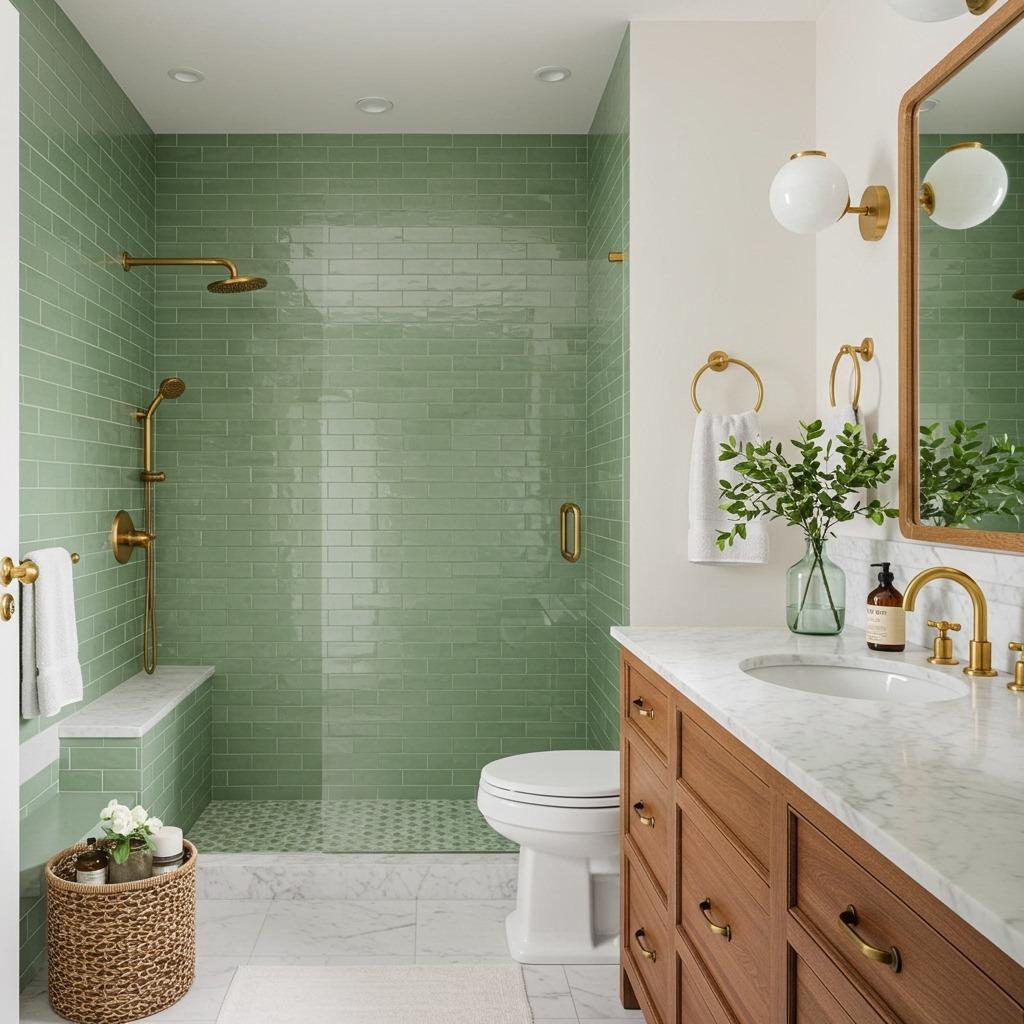
While trendy colors come and go, certain palettes have staying power because they’re rooted in nature and human psychology. Warm neutrals, soft earth tones, and muted blues and greens work across different design styles and won’t feel dated quickly.
The current move toward warmer colors makes sense beyond just trends. These tones make spaces feel more inviting and work better with the natural variation in materials we’re using. They also photograph beautifully for those Pinterest-worthy shots everyone wants.
If you love bold colors but worry about commitment, use them strategically. Maybe dramatic tiles appear only on one accent wall while other surfaces stay neutral. Or choose subtle tones for permanent installations and bring in bolder colors through easily changed accessories and towels.
Consider your home’s overall style when picking tile colors. What makes sense in a farmhouse style living room might clash with a sleek modern aesthetic. Your bathroom doesn’t need to match other rooms perfectly, but it should feel like part of the same home.
Contemporary Tile Layouts That Maximize Style
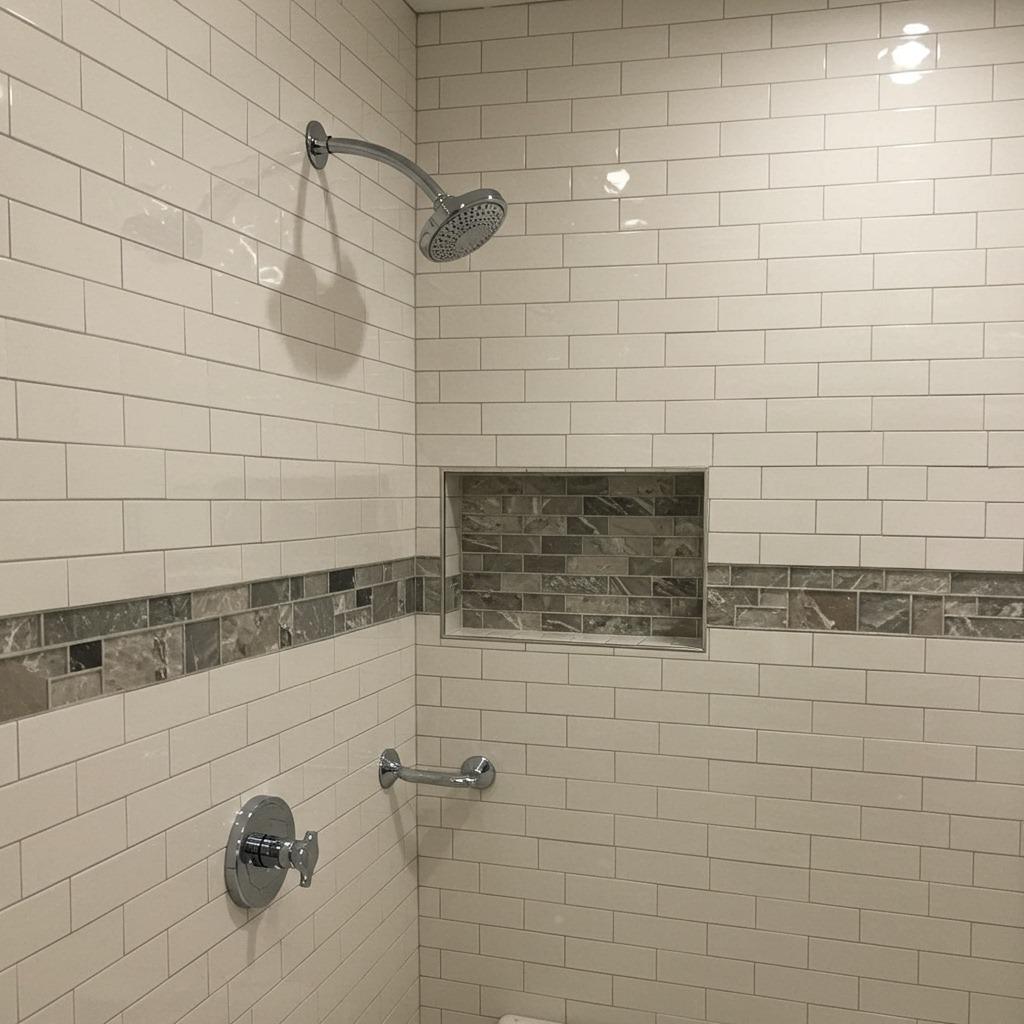
How you lay tiles can be just as impactful as which tiles you choose. Vertical stacking makes ceilings feel higher. Diagonal layouts add movement and energy. Herringbone patterns create classic elegance. Each layout tells a different visual story with the same tiles.
Mixing orientations on different surfaces creates definition without using different materials. You might run floor tiles one direction and wall tiles another, or change pattern direction at architectural breaks. These subtle shifts guide the eye and make spaces feel more deliberately designed.
Think about scale relationships too. Large tiles with tight grout lines create calm, while smaller tiles with more grout create energy. You can control how busy or serene a space feels partly through tile size and layout choices. This matters especially in living room ideas that flow into bathroom spaces.
Don’t feel locked into running tiles perfectly parallel with walls if your space has quirky angles. Sometimes following the room’s geometry creates more interesting results than fighting it. Work with what you have rather than against it.
Smart Budgeting for Tile Projects

Tile pricing varies wildly, but you don’t need the most expensive options to get beautiful results. The key is knowing where to splurge and where to save. Premium tiles often make sense for small accent areas where you want wow factor. Standard tiles work fine for larger expanses that fade into the background.
Shop for sales at tile outlets and stone yards where discontinued lines or overstock items sell at steep discounts. These aren’t inferior tiles – just colors or styles that didn’t match current marketing trends. If you’re flexible about exact shades, you can find incredible deals on quality materials.
Installation costs often exceed material costs, especially for complex patterns or small format tiles. If budget is tight, choosing larger, easier-to-install tiles saves significantly on labor. DIY-friendly tiles and straightforward layouts make professional results more accessible to homeowners willing to learn.
Remember to budget for all the other stuff beyond tiles themselves. Underlayment, waterproofing membranes, thin-set, grout, sealer, and tools add up quickly. A good rule is to add 30% to your tile cost for these necessary materials and a bit extra for mistakes or broken tiles.
Maintaining Your Modern Tile Investment
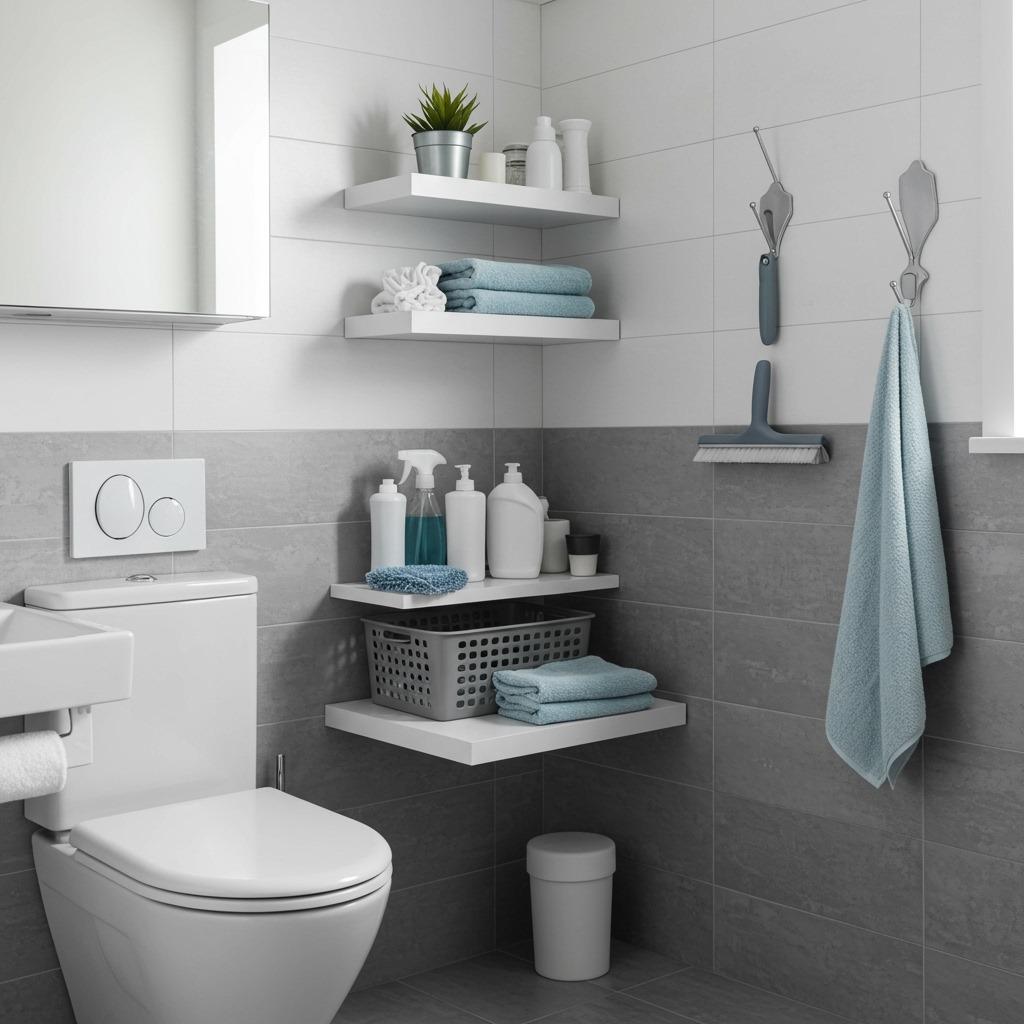
Getting beautiful tiles installed is just the beginning. Proper maintenance keeps them looking fresh for decades. The good news is that modern porcelain and ceramic tiles require minimal fuss compared to natural stone or other materials.
Daily maintenance is simple – squeegee shower walls after use to prevent water spots and mineral buildup. This 30-second habit saves hours of scrubbing down the road. For regular cleaning, pH-neutral cleaners work best and won’t damage grout or tile finishes over time.
Grout requires more attention than tiles themselves. Seal grout lines after installation and reseal annually in wet areas. This prevents moisture absorption and keeps grout looking fresh. If grout darkens over time, specialized grout cleaners or even grout paint can refresh the look without regrouting.
Address small issues promptly before they become big problems. A loose tile or small crack lets moisture underneath, which leads to much more extensive damage. Quick fixes now prevent major renovations later and protect your investment in quality tile work.
Modern bathroom tile choices give you endless possibilities to create a space that feels uniquely yours. Whether you’re drawn to minimalist large-format tiles, warm earthy tones, or bold geometric patterns, the right tile selection transforms your bathroom from purely functional to genuinely enjoyable.
The beauty of current tile trends is that they balance aesthetics with real-world practicality. You don’t have to sacrifice style for durability or ease of maintenance. Those considerations work together now in ways that make sense for how we actually live.
Start by identifying what matters most to you in your bathroom space. Do you need serious visual expansion in a tiny room? Are you after that spa-like serenity? Want something that hides the chaos of family life? Your priorities will guide you toward tile choices that work hard and look beautiful doing it. The trends give you options, but your specific needs and style should make the final decision.

